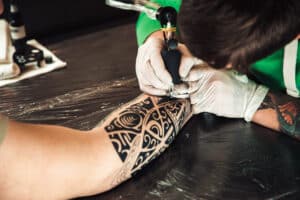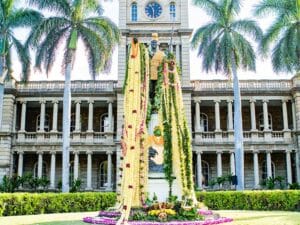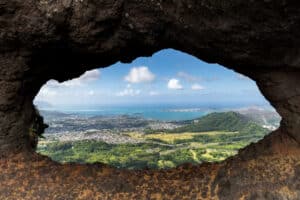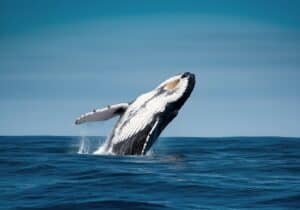Throughout Polynesia, a tattoo isn’t just body art — it’s a living story, a sign of identity, and a connection to ancestors. Hawaiian tattoos, or kākau, are powerful symbols that go far beyond their designs. They reflect heritage, family ties, responsibility (kuleana), and commitment to their duties and community.
The cultural heritage of Hawaiian tattoos is crucial, as it preserves and expresses the identity, history, and social values of the Hawaiian people. While today’s travelers may be drawn to their beauty, it’s the history and meaning behind each mark that truly brings Hawaiian tattoos to life.
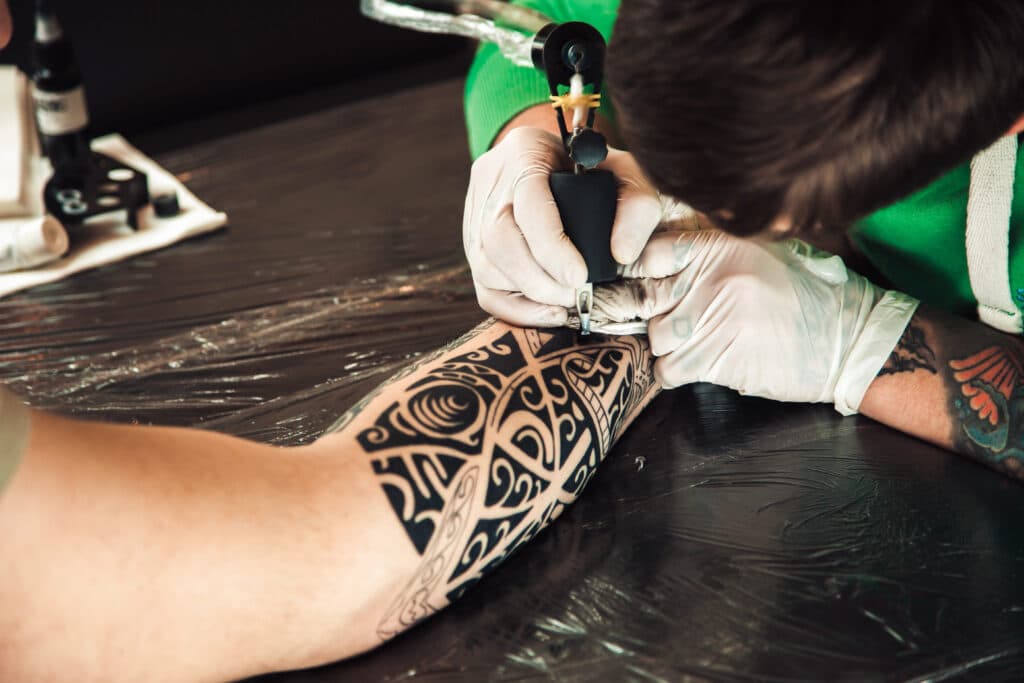
Polynesian tattoo (Shutterstock)
What Is Kākau?
In Hawaiian, the traditional word for tattoo is kākau. A traditional tattoo means “to strike or to place upon,” which reflects how ancient tattoos were made — by tapping the ink into the skin using hand tools. These tattoos weren’t just decorations — they held spiritual, social, and ancestral meaning. For many, the process itself was a rite of passage.
Kākau was used to show family lineage, personal accomplishments, or protection from harm. Certain patterns could identify a person’s home island or status in society. Some were placed in sacred locations, like near the spine or on the hands, to guard a person’s spirit. Designs were often passed down through generations and altered slightly to make each one unique to the wearer.
Polynesian Roots and Pacific Connections
Hawaiian tattoos are part of a larger Polynesian tradition that stretches across the Pacific. From the tatau of Samoa to the pe’a of Tonga and the intricate moko of Māori in Aotearoa (New Zealand), tattooing has long played a central role in Polynesian culture.
These cultures share similar tools and techniques, but each has its own distinct style and meaning. Across Polynesia, tattoos were earned, not chosen or purchased on a whim. Getting tattooed showed bravery and marked important transitions — into adulthood, into leadership, into responsibility. That shared value system continues today. For example, Maori tattoos are often tied to identity and social status within the community.
The Role of the Tattoo Artist
In the world of traditional Hawaiian tattooing, the master artist holds a position of great importance. These skilled professionals must possess a deep understanding of Hawaiian culture and the significance of each design element.
The tattoo process in itself is a sacred ritual, often involving bone and ink. The artist must be adept in these traditional techniques, ensuring that each tattoo is not only artistically precise but also culturally respectful. Their role goes beyond designer; they are the keepers of tradition, connecting the past with the present through their craft.
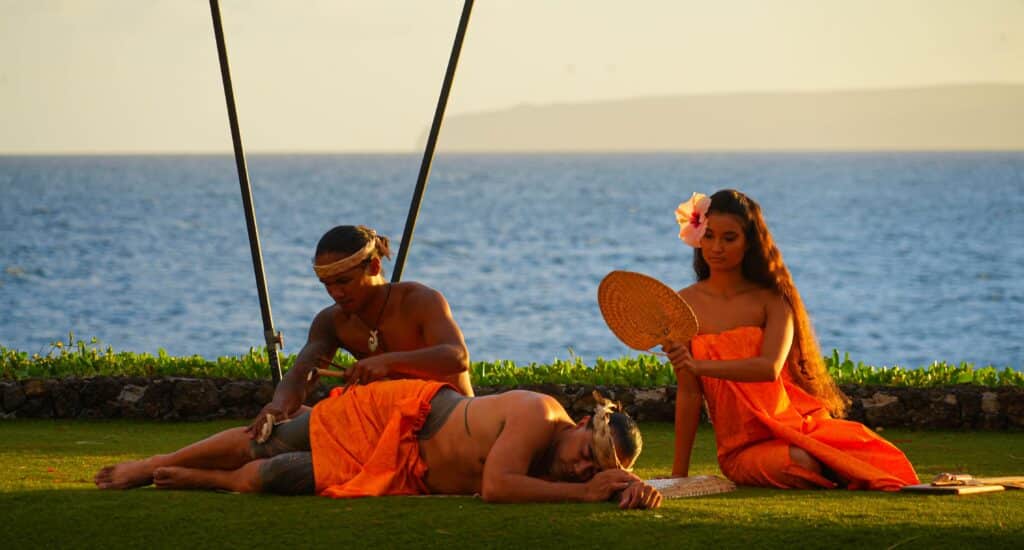
Presentation of a Polynesian tattoo session (Shutterstock)
Traditional Tools: The Art of the Tap
Traditional tattooing tools are made from natural materials. In old Hawaiʻi, artists used tools like kaua (combs) made from sharpened bone or ivory, sometimes from birds or turtles. These tools allowed for the creation of intricate designs that incorporated significant symbols and patterns, enhancing both aesthetic appeal and cultural meaning. These were lashed to wooden handles and dipped in ink made from natural elements like candlenut soot or sugarcane juice.
The artist would tap the comb with a stick to drive the ink into the skin. This tapping motion — called kākau uhi — was rhythmic and intense, often accompanied by chanting or spiritual ceremony. The process could take hours or days, depending on the size and detail of the design. Healing was long, but the meaning was forever.
Modern tattoo artists may still use these hand-tap tools, while others choose machines for precision. Both approaches can carry cultural weight, as long as the intention and story remain rooted in respect.
Tribal Tattoos Today
Today, tribal tattoos continue to evolve. Some wear bold black bands around their arms or legs, filled with traditional symbols like waves, shark teeth, or niho mano. Others work with tattooists to design personal stories told through geometric shapes and native plants like taro or ulu. The tattoo journey, from the initial consultation to the final implementation, is a deeply personal and transformative experience that connects individuals to their cultural heritage.
While machines are common, many practitioners are reviving traditional hand-tap methods. Artists like Keone Nunes and Aisea Toetuʻu have helped bring back ancestral practices with care and reverence. Their work isn’t just about ink — it’s about connecting people to their roots.
As Hawaiian tattooing gains popularity, cultural leaders emphasize the importance of kuleana —responsibility. Getting a Hawaiian tattoo isn’t just about the look. It’s about understanding the story behind it, respecting the culture, and honoring those who came before you.
Social Status and Hawaiian Tattoos
In ancient Hawaiian society, tattoos were a clear indicator of an individual’s social status and rank. Only those of high status or rank were permitted to have tattoos, and the design and placement of these tattoos signified their position within the community.
Facial tattoos, for example, were reserved for chiefs and other high-ranking individuals, serving as a visible mark of their authority and prestige. Body tattoos were more common among warriors and commoners, each design reflecting their role and achievements. This practice underscored the importance of tattoos as a form of social currency, where each mark carried significant weight and meaning.
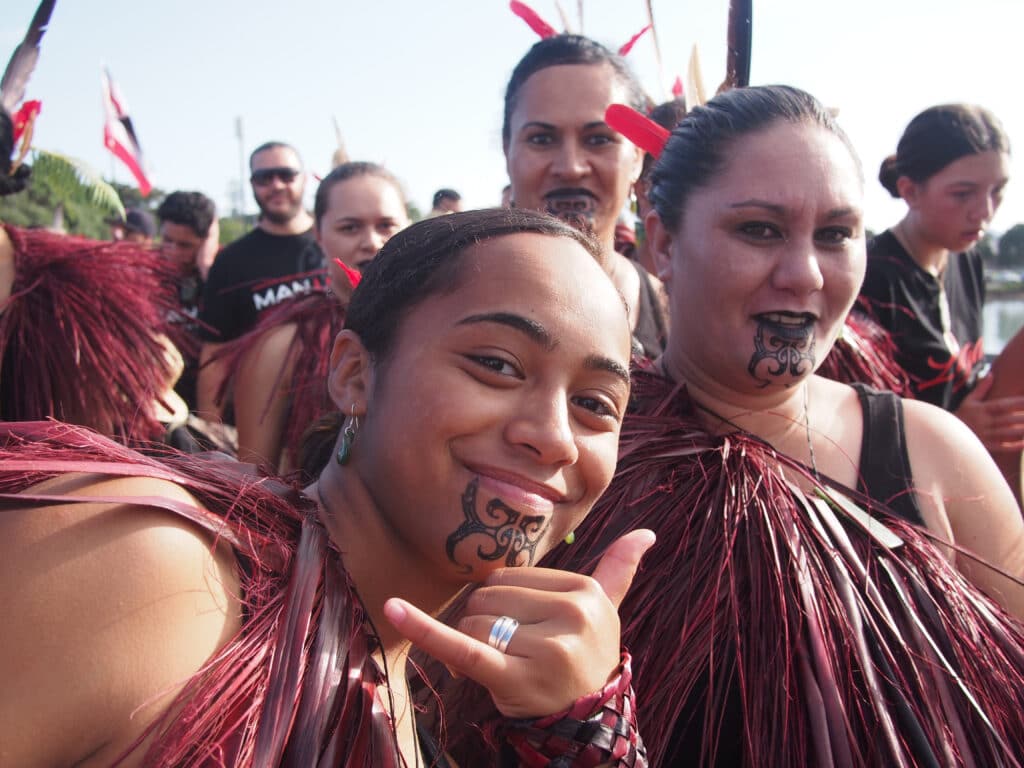
traditional tribal facial tattoos (Shutterstock)
Respecting the Culture: Know Before You Ink
Not all tattoos are for everyone. Some designs are kapu — sacred — and meant only for specific families or lineages. Before getting a Hawaiian tattoo, it’s important to research and talk with a cultural practitioner or tattoo artist who understands the significance. Many will help create a design that tells your story while still respecting Hawaiian tradition. The tattoo experience should be a deeply personal and culturally significant journey.
According to one user on Instagram, “My tattoo isn’t just pretty ink. It’s my story. My lineage. My strength. This sense of purpose is what makes kākau so powerful.”
It’s a journey of learning, not just aesthetics. A good place to start is by exploring cultural exhibits like those at the Bishop Museum, which often display traditional tattooing tools and stories from Hawaiian history.
Another user shared, “Getting tattooed in Hawaiʻi was a spiritual experience. The artist asked about my ancestors, my path, and created something that felt like home.”
Tips Before You Get Inked in Hawaiʻi
- Do your research: Not every Hawaiian tattoo is designed for everyone. Ask questions and learn the meanings. Understand that a contemporary modern tattoo might be more appropriate for visitors.
- Choose your artist carefully: Look for someone with cultural knowledge and strong connections to the community.
- Be respectful: Don’t treat tattooing as a souvenir. It’s a living tradition with deep roots.
- Heal with care: If you get a tattoo in Hawaiʻi, be aware of sun, sand, and ocean exposure during the healing process.
More Than Skin Deep – A Tattoo Journey
Whether you’re Hawaiian or just drawn to the Islands’ beauty, a Hawaiian tattoo is never “just a design.” It’s a form of storytelling, of remembrance, and of belonging. Each kākau carries a message — about family, land, duty, spirit, and cultural heritage. The ink may fade with time, but the meaning only grows deeper.

